#basalt fiber
Explore tagged Tumblr posts
Text
Basalt Fiber Market: Transforming Construction, Automotive, Wind Energy, Electronics, and Marine Industries

Basalt fiber, a remarkable material derived from volcanic rock, is fast becoming an essential component across multiple industries. Its natural origin, combined with a suite of performance advantages, makes it a unique, eco-friendly alternative to traditional materials like fiberglass, carbon fiber, and steel. The basalt fiber market is booming, supported by an increasing demand for lightweight, durable, and sustainable materials in sectors such as construction, automotive, wind energy, electronics, and marine.
Understanding Basalt Fiber
Basalt fiber starts as basalt rock, which is melted and then extruded into fine fibers. Unlike synthetic fibers, basalt fiber is natural, which makes it an attractive choice for industries striving to meet green and sustainable goals. Besides being non-corrosive and thermally stable, basalt fiber also boasts impressive strength, making it ideal for heavy-duty applications where durability matters.
What’s Driving Market Growth?
Basalt Fiber Market is expected to grow significantly over the next several years, with a predicted valuation of USD 503 million by 2028, up from USD 279 million in 2023.
The global market for basalt fiber is set to expand rapidly due to several significant factors:
Shift Towards Lightweight, High-Performance MaterialsAcross industries, there’s a strong focus on using lightweight materials that contribute to improved efficiency, lower emissions, and reduced costs. Basalt fiber’s combination of high tensile strength and low weight is leading it to replace heavier, more traditional materials, particularly in construction and transportation.
Commitment to SustainabilityMore industries are aiming to reduce their carbon footprints, making basalt fiber an attractive solution. Since it’s derived from a naturally occurring material, its production has a lower environmental impact compared to synthetic fibers, aligning well with sustainability objectives in sectors like wind energy and automotive.
Reliable Performance in Harsh ConditionsOne of the main reasons for the rising popularity of basalt fiber is its exceptional performance under extreme conditions. Basalt fiber is highly resistant to corrosion, temperature, and chemicals, making it perfect for challenging environments. This has huge implications for the marine, electrical, and electronics industries, where materials must withstand demanding situations.
Cost-Effective Alternative to Carbon FiberWhile carbon fiber is known for its strength, it’s also expensive, and that’s where basalt fiber shines. Offering comparable benefits at a fraction of the cost, basalt fiber is a budget-friendly option for industries like construction and automotive that are conscious of their bottom line but still need top-notch performance.
Expanding Applications of Basalt Fiber
Let’s look at how basalt fiber is finding its way into key industries, adding value through its durability, strength, and environmental benefits.
1. Construction and Infrastructure
In the construction world, basalt fiber is gaining popularity as a reinforcement in concrete structures, providing an alternative to steel rebars. Basalt rebar doesn’t corrode, handles thermal fluctuations well, and is lightweight, making it ideal for bridges, highways, and buildings exposed to severe weather. It’s also used in applications like soil stabilization, erosion control, and roofing solutions, where strength and longevity are key.
2. Automotive and Transportation
As vehicle manufacturers look to reduce weight to improve fuel efficiency, basalt fiber is proving to be a valuable asset. It’s increasingly being used in car body panels, engine parts, and other automotive components. Additionally, basalt fiber’s ability to dampen vibrations and insulate against heat makes it ideal for enhancing passenger comfort and safety in electric and hybrid vehicles.
3. Wind Energy
Wind turbine blades, one of the most vital components in wind energy generation, need materials that can endure high-stress environments. Basalt fiber’s fatigue resistance and ability to withstand constant exposure to harsh weather make it an ideal candidate for turbine blades. Its use here supports the renewable energy sector’s push for materials that align with long-term sustainability.
4. Electrical and Electronics
With its excellent insulative properties, basalt fiber is being adopted in electrical applications, where reliable insulation against heat and electricity is a must. It’s used in cables, circuit boards, and other components that require resistance to high temperatures and fire, making it especially valuable for safety-critical applications.
5. Marine Industry
Saltwater corrosion and UV exposure are ongoing challenges in marine applications. Basalt fiber’s durability in marine environments makes it perfect for use in ship hulls, decks, and underwater structures. Its resistance to biological degradation means it will last longer in these challenging environments, making it a wise choice for marine manufacturers.
What’s Next for Basalt Fiber?
Looking ahead, the basalt fiber market has a promising future as more industries recognize its value. Key advancements, such as improvements in manufacturing processes to reduce costs, will help make basalt fiber even more accessible.
Despite its growth, some hurdles remain. Production is still limited compared to more conventional materials like fiberglass. Increasing the availability of basalt fiber, building stronger supply chains, and raising awareness of its benefits will be crucial to fully unlocking its potential. Once these challenges are addressed, basalt fiber has the potential to reshape the materials landscape in many sectors.
To know more Download PDF Brochure :
Basalt fiber is set to make waves across construction, automotive, wind energy, electronics, and marine industries. With its combination of strength, durability, and sustainability, it is becoming an essential part of the solution for companies looking to innovate while also prioritizing environmental responsibility. As production scales up and research continues to improve its properties, basalt fiber is likely to become a mainstay in advanced materials.
For companies looking to stay competitive, investing in basalt fiber technology now could align with long-term goals of sustainability, resilience, and efficiency. The shift to basalt fiber is a step toward a smarter, greener future
#Basalt Fiber#Sustainable Materials#Construction Innovation#Automotive Materials#Wind Energy#Marine Industry#Advanced Composites
0 notes
Text
BFRP REBAR’S SUSTAINABILITY
Rebar made from Basalt Fiber Reinforced Polymer has less than 74%the carbon footprint of steel and basalt has the lowest environmental impact in a Life-Cycle Assessment compared with other Fiber Reinforced Polymer rebar for concrete reinforcement construction applications.
Now more than ever, the world needs sustainability. If you think that using green and sustainable materials is the way forward, you can help to make this happen. Steel is one of the most widely used materials in the world but it is not infinite, and it will disappear at a faster rate than we think if we don’t do something about it. Moreover, most of us are aware of the environmental damage caused by steel production and use.
Steel products are one of the largest contributors to the carbon footprint, especially in the construction industry.
As well, repair of concrete infrastructure can cost billions of dollars a year, and steel reinforcement is no longer the preferred option.
The time has come for something to be done. Rebar made from Basalt Fiber Reinforced Polymer has less than 74%the carbon footprint of steel and basalt has the lowest environmental impact in a Life-Cycle Assessment compared with other Fiber Reinforced Polymer rebar for concrete reinforcement construction applications.
Basalt is the most common volcanic rock type on Earth, making up over 90% of all volcanic rock on the planet, Basalt Fiber is extruded from basalt rocks through a melting process without the application of additives.
BFRP Rebar has the best corrosion resistance of any material in the construction industry, including other fiber-based materials, leading to a decrease in maintenance costs of billions of dollars.
Today, more than ever, it’s important to spread awareness about this product, and this responsibility lies mostly with policy makers.
Our goal is to have a better future. At Arab Basalt Fiber Company we use the latest technology to reduce the impact on the environment.
Arab Basalt Fiber Company
Building material supplier
Basalt Fiber Suppliers
0 notes
Photo
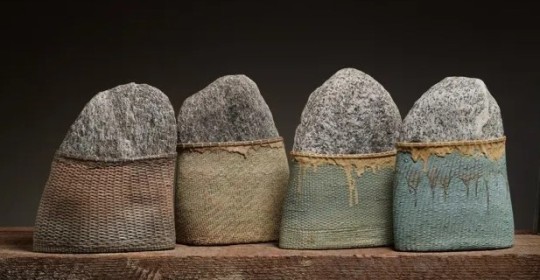
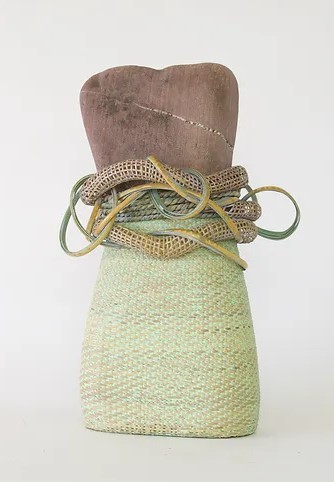

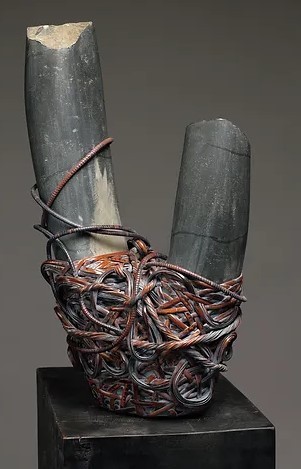
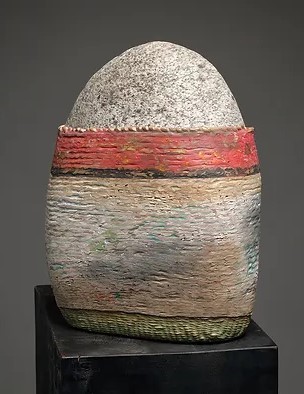


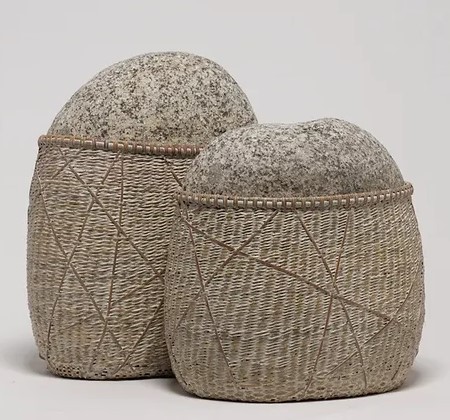
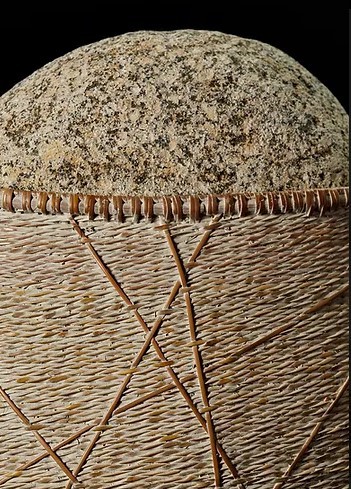
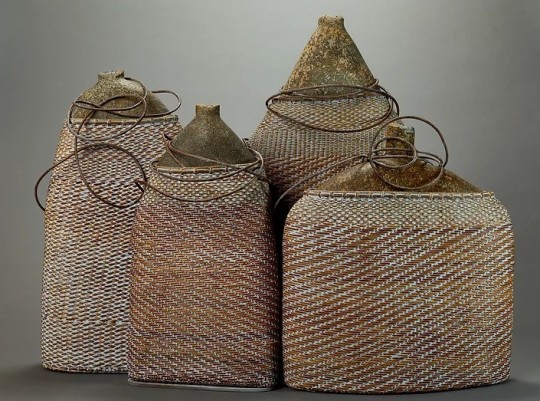
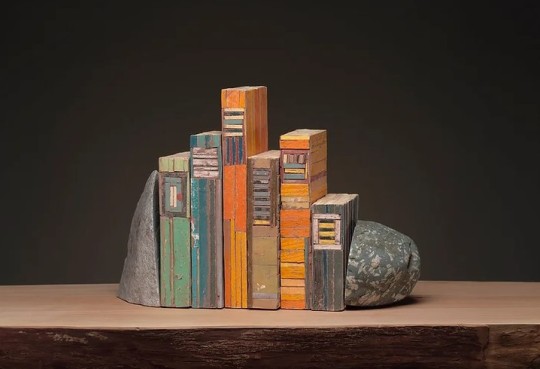
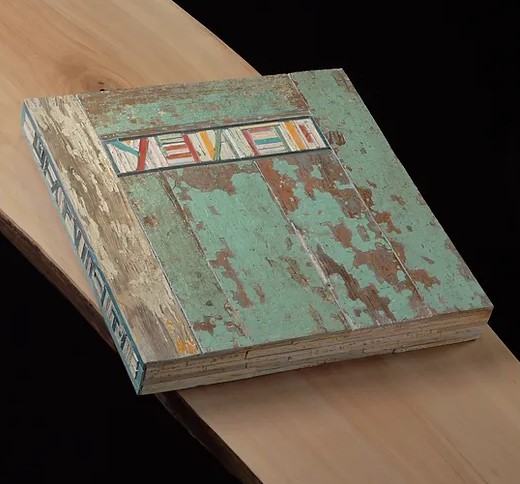
Deloss Webber (b.1951, working in Seattle)
Mountain in Four Seasons - granite, fiber, pigment, mixed media - average size 16″x 12″x 4″
untitled - stone, fiber - 2019
Freud's Couch - steel, rattan, basalt - 18″x 22″x 76″
After the Fire - basalt, rattan - 6″x 12″x 19″
Venice - granite, cane, pigment - 6″x 10″x 15″
Fireworks on Mt. Fuji - granite, fiber, wood, pigment - 29″x 10″x 8″
Visitation (two views) - carved wood, found wood chips - 58″x 33″x 26″
Tracks in the Snow (back) & Morning Dew (front) - granite, cane, pigment - 14″x 12″x 7″ & 12″x 12″x 8″
Tracks in the Snow (detail) - granite, cane, pigment
Old Soldier Series - granite, wood, bamboo, pigment - heights vary 16″ to 22½”
Wood Chip Book set - wood chips, pigment, stone
Tome - found wood chips, pigment - 16″x 16″x 2″

https://www.delosswebberartist.com/
#art by others#other's artwork#sculpture#found objects#fiber#weaving#stone#wood#Deloss Webber#granite#basalt#rattan#bamboo#cane
26 notes
·
View notes
Text
Basalt Fiber Reinforcement in Construction: A Sustainable Paradigm Shift
Introduction In the contemporary construction landscape, a notable shift towards sustainable and eco-friendly building materials is underway. Among the alternatives gaining prominence is basalt fiber reinforcement, positioning itself as a compelling substitute for traditional steel reinforcement. This transition is fueled by a collective desire to reduce environmental impact and elevate the…
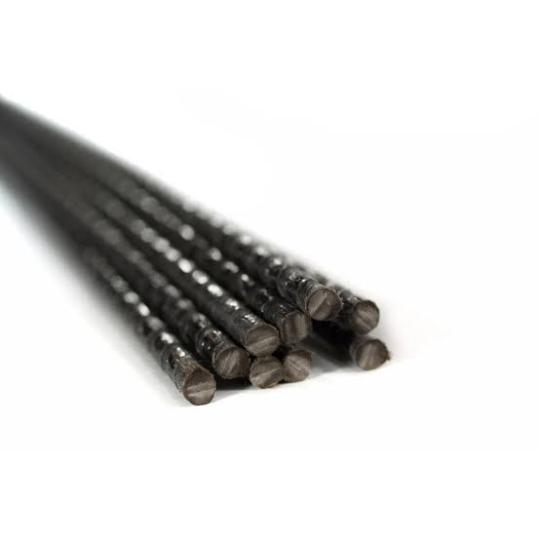
View On WordPress
#alternative to steel reinforcement#basalt fiber applications#basalt fiber properties#Basalt fiber reinforcement#basalt mesh in concrete#BFRP composites#construction industry sustainability#corrosion-resistant materials#durability in construction#eco-friendly building#environmental impact of construction#future of construction materials.#green building practices#lightweight construction materials#seismic resilience in buildings#steel replacement in construction#strength-to-weight ratio#Sustainable Construction Materials#sustainable structural design#thermal insulation in construction
2 notes
·
View notes
Text
The Basalt Fiber Market size was valued at USD 279 Mn in 2023 and market revenue is growing at a 12.5 % CAGR from 2024 to 2030, reaching nearly USD 636.31 Mn by 2030.
0 notes
Text
going on 6 years of knowing about a material and thinking “man i should google how its actually made” and never doing it
0 notes
Text
The Basalt Fiber Market is growing at a CAGR of >11.13% over the next 5 years. Basaltex , MAFIC, Kamenny Vek, Sudaglass Fiber Technology, BASTECH are the major companies operating in Basalt Fiber Market.
#Basalt Fiber Market#Basalt Fiber Market Size#Basalt Fiber Market Share#Basalt Fiber Market Analysis#Basalt Fiber Market Trends#Basalt Fiber Market Report#Basalt Fiber Market Research#Basalt Fiber Industry#Basalt Fiber Industry Report
0 notes
Link
#marketsandmarkets research pvt. ltd.#basalt fiber market#basalt fiber market size#basalt fiber market share#basalt fiber industry
0 notes
Text
The flights and their major exports
Ice: furs, fish, culinary or food grade ice, unique and seasonal herbs, spices and flora that only grow there in the spring, super rich culinary culture has formed here and it attracts tourism and foodies, cooking oils and fats, seeds and nuts for consumption
Nature: lumber, meats, spices, fertile soil, insect cuisine, perfumes, freshwater fish, houseplants, seeds and shoots for farming, decorative plant or wood working, plant based oils for cooking or fuel
Light: wheat, plant based fibers and fabrics, paper and or papyrus, chalk and marble, huge bread and baked goods industry, baskets, porcelain, exotic percivore cuisine, pigments, seasonal fruits
Earth: cactus fruits, minerals and stones, gemstones, terracotta creations or construction pieces, ceramic work, glass tile work, roots and tubers, fossils, pigments,
Wind: rice, grains, construction grade bamboo, paper, rice paper, fabrics, plants and small birds for consumption, instruments (specifically wood-wind), silks, ribbon, sonorous sculptures
Shadow: fungal harvests, wire craft, tactical suits and mantles to conceal the body, iron weaponry with decorative detailing, insect and plant exports, huge root farming industry, lantern exports, candles, woodturned tools/utensils/decor/etc
Water: shells and abalone, fish, seaweed and kelp cuisine, boats and boat blueprints, crustacean cuisine, huge huge huge provider for the pescatarians, opal
Lightning: machinery parts, batteries, cactus harvests, insulation for both heat and electricity, exotic insect cuisine, dried and aged foods, electricity is produced in excess enough to provide immediately to the surrounding territories
Arcane: stained glass, lumber from the starwood strand (has unique properties and could be used for construction or artistic works), magical batteries made from the crystals, tomes and books, lenses, exotic herbivore cuisine, luminous pigments, tapestry work
Plague: immunizers/immunizations, craft and construction grade bones, leather, ale/mead/wine/whiskey/etc because they have the most intricate and detailed brewing and fermenting processes due to the understanding they have surrounding bacteria, pickled foods and pickling kits, surgical grade tools, cheeses, dry aged meats, medical practices unlike any other
Fire: weapons and armor, exotic carnivore cuisine, glasswork and glass blowing, obsidian and basalt export, geothermic energy(they can provide power enough to the surrounding territories) intricate mosaic and tile work, mineral exports, ceramic exports, blackened foods, metal shells and armor for vessels and vehicles and mounts
These are just what I can think of by examining the map and element at face value, there are millions of things these places can produce and export but I think these are the big ones or what they are known for, maybe even just the best quality versions of the export! If you want to use these ideas or add your own feel free!
290 notes
·
View notes
Note
what are your top five textiles (any purpose)
This is the second time within a week that I've been asked about textiles, which is wild because it's also the second time ever.
Anyway I had to look up a list of textiles and rank them on a spreadsheet to settle on my top 5, which are as follows:
Spider Silk - The fibers are complicated and fascinating and very difficult to produce in large quantities and that makes spider silk very very valuable, at least in my mind. The way it coils and reacts to water and its insane toughness are all super cool.
Basalt Fiber - I love basalt and the fact you can turn it into a textile is amazing to me. It's used in ship hulls!
Carbon Fiber - Before covid I was in college working on a biotech degree and I have a fondness for organic chemistry. Carbon fiber is just cool as hell in concept. Like "We're gonna make a real strong textile out of molecular tubes." Fuck yes.
Silk - If a tiny creature makes little textiles it's safe to assume I think it kicks ass. Plus I like the way silk feels. Also it's very durable, some articles surviving the wreck of HMS Royal George and spending 60 years underwater before being recovered in good condition in 1840.
Wool - Cozy. Warm even when wet. Sheep make it and they don't even know anything. They're just like "fuck dude. fabric coming out of my body. I'm gonna eat grass about it"
27 notes
·
View notes
Text

Latest scientific results of China’s lunar and deep space exploration
CE-4 mission
The Chang'e-4 mission was the first spacecraft to land on the Moon's far side, specifically in the Von Kármán crater within the South Pole-Aitken Basin (45.457°S, 177.588°E), with a geological age of ~3.6 Ga. The landing site revealed regolith with an average grain size of 15 µm, covered by ejecta layers up to 70 m thick. Spectral analysis identified olivine and low-Ca pyroxene, suggesting deep mantle origin. Thermal properties showed efficient heat insulation, while radar data revealed subsurface structures. High radiation levels, with ENA (Energetic Neutral Atom) flux reflecting solar wind interactions, were observed, providing insights into lunar-solar wind dynamics.
The Chang’E-4 mission provides a unique opportunity to reveal the space environment on the lunar far side, with the Advanced Small Analyzer for Neutrals (ASAN) and Lunar Lander Neutron and Dosimetry (LND) instruments onboard the Yutu-2 rover. The ASAN instrument is designed to measure the low-energy particles from the solar wind-surface interaction. A partially-formed lunar mini-magnetosphere has been observed by ASAN, where no shock but just a boundary layer can be found near the magnetic anomalies. In addition, the energy spectra of energetic neutral atoms scattered from the lunar surface, as well as their dependences on the solar wind, have been detected by ASAN. The LND instrument has performed the first active dosimetric measurements on the lunar surface. It is found that the interaction of GCRs with the lunar regolith can results in upward-directed albedo protons, and the ratio of albedo protons to primary protons in the energy range of 64.7-76.7 MeV has been obtained with the LND measurements. Additionally, the spectra of cosmic rays in the energy range of 10 to 100 MeV/nuc has been measured by LND, which is a little bit different from those measured by the near-earth spacecraft, and suggests a non-negligible contribution of secondary particles to the surface radiation environment. There results have done much to improve our understanding on the lunar space environment and are very helpful for the future lunar explorations.
CE-5 mission
Compositional analyses of the lunar soil have revealed higher concentrations of FeO, along with moderate levels of TiO2 and Al2O3. Analyses have shown that much of the lunar soil from the Chang'E-5 mission likely originated from the Xu Guangqi crater, northwest of the landing site, and is characterised by a high degree of maturity, a condition largely attributed to the extensive micrometeoroid impacts in the region. Micrometeoroid impacts have led to the predominance of spallation processes in the formation of the soil.
The average particle size of the Chang’E-5 soils is around 50 μm, with a relatively low glass content. Basaltic fragments are composed of clinopyroxene, plagioclase, olivine, and ilmenite, with textures varying from porphyritic to ophitic and poikilitic. While previous analyses suggested abundant olivine, laboratory studies revealed the presence of iron-rich high-Ca pyroxene, challenging prior assumptions about the mineral composition of this lunar region.
Impact glasses found in the Chang’E-5 samples display diverse forms, including ultra-elongated fibers and amorphous layers without np-Fe0, indicative of a moderate impact environment. The composition points to a primarily local origin, with transport distances limited to 150 km or less. U-Pb isotopic dating suggests these glasses formed between a few million and two billion years ago, younger than the basalts. Additionally, KREEP-rich impact glass has been discovered, possibly originating from the boundary between the P58/Em4 mare unit and adjacent highlands.
Space weathering studies on Chang’E-5 samples show that iron-rich basalts experience rapid formation of np-Fe0, which aggregates into larger particles. The discovery of np-Fe0 in amorphous layers on fayalitic olivine surfaces provides new insights into space weathering mechanisms. This phenomenon is primarily driven by micrometeoroid impacts, with only minimal contribution from solar wind injection. Furthermore, lunar agglutinate glasses contain np-Fe0 and Fe3+, which increase with ongoing micrometeoroid impacts.
A notable discovery in the Chang’E-5 samples is the presence of iron meteorite fragments, classified as part of the IID group based on their Ni- and P-rich, S-poor composition. These fragments formed through low-velocity impacts and provide valuable information on lunar impact processes. Additionally, newly discovered minerals, such as trigonal Ti2O and triclinic Ti2O, were found in micrometeorite impact craters on glass beads, enhancing our understanding of space weathering effects.
Sulfides in the Chang’E-5 samples, though constituting less than 1%, also reveal impact-induced weathering. Magnetite and np-Fe0 particles were observed in iron-sulfide particles, formed by eutectoid reactions, providing evidence of significant impact events on the lunar surface.
Solar wind-derived water is another critical finding, with more than 170 ppm of water detected in the Chang’E-5 samples, consistent with lunar surface spectral measurements. Impact glasses in the lunar soil contain 15 to 25 ppm of molecular water, primarily solar wind-derived. These glasses are essential for preserving water and help sustain the lunar surface water cycle. The concentration of solar wind-derived water in glass beads can reach up to 2000 ppm, with an average of about 500 ppm.
The petrogenesis of the Chang’E-5 basalts suggests they originated from an olivine-bearing pyroxenite mantle source at pressures of (1.0–1.3)×103 MPa and temperatures around 1350 ± 50 °C. These basalts indicate that lunar magmatic activity persisted until at least 2 billion years ago, suggesting the Moon experienced large-scale volcanic eruptions later than previously thought. The Chang’E-5 basalts exhibit rapid cooling with shorter degassing periods compared to Apollo samples, and the latest findings suggest evidence of volcanic activity on the Moon as recently as 120 million years ago.
Tianwen-1 mission
China's Tianwen-1 mission, featuring the Zhurong rover, has made remarkable progress in uncovering the geological and environmental history of Mars, particularly in the southern Utopia Planitia region. Combining advanced instruments such as low-frequency radar, multispectral imaging, and environmental sensors, the mission has provided a comprehensive understanding of both the surface and subsurface structures of Mars. These discoveries are shedding new light on the planet's dynamic past, offering clues about water-related processes and climate shifts.
One of the key findings involves the dynamic changes in Martian aeolian landforms, particularly Transverse Aeolian Ridges (TARs) and dunes. These structures, initially shaped by northern winds and later reworked by northeastern winds, reflect the planet's complex climatic history. The observed changes in dune morphology align with the end of Martian most recent ice age, suggesting a major transition from glacial to interglacial periods. This transition was marked by significant wind regime shifts, which reshaped the Martian landscape, providing critical evidence of the Martian evolving climate.
The radar data collected by the Zhurong rover has revealed detailed subsurface stratigraphy, exposing sedimentary sequences at depths of 10 to 80 meters. These sequences indicate multiple resurfacing events that likely occurred during the late Hesperian period (approximately 3.5 to 3.2 billion years ago) and possibly extended into the Amazonian period. This points to the possibility of water-related geological processes continuing far longer than previously believed. Furthermore, spectroscopic studies have detected the presence of water-bearing minerals, such as polyhydric sulfates and gypsum, which support theories of a once wetter Mars, potentially with subsurface glaciers or permafrost.
Environmental sensors on Zhurong rover have provided vital data on Martian dust deposition, wind dynamics, and surface temperatures. During the Martian spring and summer, strong winds were found to significantly influence dust deposition rates, a critical factor in understanding Martian current surface conditions. Thermal inertia and dust have been identified as key contributors to the regulation of surface temperatures, especially during periods of increased dust storm activity.
Water-related processes have also been a key focus of the mission. While liquid water is unlikely to be stable at shallow depths, there is evidence of brine ice deposits near the surface. The Mars Climate Station (MCS) aboard Zhurong rover has regularly recorded frost formation, which sublimates after sunrise, suggesting active water vapor cycles. This observation provides crucial insight into the interactions between the Martian atmosphere and surface.
In conclusion, the Tianwen-1 mission has delivered significant insights into Martian geological and environmental conditions, particularly its water history and climatic evolution. These discoveries have important implications for whether there was potential life on ancient Mars and provide a foundation for future missions aimed at exploring Martian habitability.
The Martian space environment investigation is carried out mainly based on insitu observations on board Tianwen-1 orbiter. Comparisons between Tianwen-1 and other Earth & Mars based observations confirmed a general consistency among missions. Data correction and retrieval algorithms have been developed to improve data quality or provide supporting data. Remote sensing of the interplanetary media, radio occultation of the ionosphere and atmosphere were also explored using the VLBI data. Observations reveal that up to Mars, the background solar wind is important in determining the interplanetary evolution and global morphology of ICMEs; A small but finite cross-field diffusion is crucial to understanding the formation of the SEP reservoir phenomenon. The foreshock waves are highly distorted. The Martian bow shock is rapidly compressed and then expanded in response to the dynamic pressure pulse in the solar wind, and also oscillates during the IMF rotation. The altitude of the Martian ionopause location was lowered during the ICME. The depletion of the plasma density in the topside Martian ionosphere on the nightside reveals the presence of substantial ion and electron escape. The planetary heavy ions picked up by the solar wind mostly originate from middle and low MSE (Mars Solar Electric) latitude of the northern dayside Martian ionosphere. Enhanced acceleration of pickup ions inside the magnetosheath by the motional electric field located at the upper edge or within the Magnetic Pileup Boundary. The observations were also used to evaluate the performance of an operational solar wind prediction system, to predict the arrival time and in-situ parameters of corotating interaction regions (CIRs).
5 notes
·
View notes
Text
إنتاج قضبان ألياف البازلت في دولة الإمارات
إنتاج قضبان ألياف البازلت في دولة الإمارات

الشركة العربية لألياف البازلت
يتم الإنتاج محلياً في دولة الإمارات العربية المتحدة، حيث ننتج قضبان التسليح من ألياف البازلت المستدامة عالية الجودة والخالية من الأضرار البيئية، وذلك باستخدام أحدث التقنيات العالمية
الشركة العربية لألياف البازلت هي الشركة الأولى من نوعها في المنطقة العربية، و��لثانية عالمياً من حيث الطاقة الإنتاجية، والتي تصل إلى خمسة آلاف طن سنوياً من قضبان البوليمر المقوّى بألياف البازلت
يتم الإنتاج محلياً في دولة الإمارات العربية المتحدة، حيث ننتج قضبان التسليح من ألياف البازلت المستدامة عالية الجودة والخالية من الأضرار البيئية، وذلك باستخدام أحدث التقنيات العالمية
ننتج قضبان التسليح من ألياف البازلت بأقطار مختلفة تتراوح من 4 مم إلى 32 مم
تم تنفيذ هذا العمل من قبل الشركة العربية للتعدين – الفجيرة ( وهي الكيان الأم للشركة العربية لألياف البازلت) وتم اختيار إمارة الفجيرة موقعًا للمشروع وذلك نظرًا لأن إمارة الفجيرة تمتلك احتياطات ضخمة جدًا من صخور البازلت إضافةً لتوافر البنية التحتيّة اللازمة للإنتاج والتصدير مثل ميناء الفجيرة
تعاقدت الشركة العربية لألياف البازلت مع شركة تقنيات بازلت المملكة المتحدة Basalt Technologies) (UK Ltd المعروفة باسم (BASTECH) لتشغيل وإدارة منشأتها لإنتاج قضبان التسليح من البوليمر المقوّى بألياف البازلت BFRP Rebar
تم إنشاء شركة تقنيات بازلت المملكة الممتحدة (BASTECH) خصيصًا لتطوير تقنيات إنتاج ألياف البازلت في جميع أنحاء العالم. لدى BASTECH فريق تقني بخبرة لأكثر من 20 عام في مجال إنتاج ألياف البازلت
ونظرًا لارتفاع الطّلب على حديد التسليح الآن إلى جانب الارتفاع الحاد في أسعار الحديد الصلب في السوق، فإن لدى الشركة العربية لألياف البازلت فرصة كبيرة لتقدّم بديلا لا يصدأ ولا يتآكل عن قضبان حديد التسليح مما يزيد من عمر البنى التحتية لجميع المشاريع الانشائية
يسعدنا تقديم الندوات والعروض التقديمية والمزيد من المعلومات حول قضبان التسليح المُنتجة من ألياف البازلت لمؤسستك يرجى التواصل معنا وسنتولى هذا الترتيب
للحصول على عرض أسعار، انقر فوق زر الطلب واملأ بياناتك وسيقوم فريقنا بالتواصل معك في أقرب وقتhttps://arabbasaltfiber.com/contact-us-ar/https://arabbasaltfiber.com/basalt-fiber-rebar-order-ar/https://arabbasaltfiber.com/contact-us-ar/
0 notes
Text
List of all SDV and SDV:E (Stardew Valley: Expanded) Giftable Items
Horseradish
Daffodil
Leek
Dandelion
Parsnip
Cave Carrot
Coconut
Cactus
Banana
Sap
Large Egg
Egg
Milk
Large Milk
Green Bean
Cauliflower
Potato
Garlic
Kale
Rhubarb
Melon
Tomato
Morsel
Blueberry
Fiddlehead Fern
Hot Pepper
Wheat
Radish
Red Cabbage
Starfruit
Corn
Rice
Eggplant
Artichoke
Pumpkin
Bokchoy
Yam
Chanterelle
Cranberry
Holly
Beets
Ostrich Egg
Salmonberry
Amouranth
Pale Ale
Hops
Void Egg
Mayonnaise
Duck Mayonnaise
Void Mayonnaise
Clay
Copper Bar
Silver Bar
Gold Bar
Iridium Bar
Refined Quartz
Honey
Pickles
Jam
Beer
Wine
Juice
Clam
Poppy
Copper Ore
Silver Ore
Coal
Gold Ore
Iridium Ore
Wood
Stone
Nautilus Shell
Coral
Summer Shell
Spice Berry
Sea Urchin
Grape
Spring Onion
Strawberry
Sweet Pea
Common Mushroom
Wild Plum
Hazelnut
Blackberry
Winter Root
Crystal Fruit
Snow Yam
Sweet Gem Berry
Crocus
Red Mushroom
Sunflower
Purple Mushroom
Cheese
Goat Cheese
Cloth
Truffle
Truffle Oil
Coffee Bean
Goat Milk
Large Goat Milk
Wool
Duck Egg
Duck Feather
Caviar
Lucky Rabbit’s Foot
Aged Roe
Ancient Fruit
Mead
Tulip
Summer Spangle
Fairy Rose
Blue Jazz
Apple
Green Tea
Apricot
Orange
Peach
Pomegranate
Cherry
Bug Meat
Hardwood
Maple Syrup
Oak Resin
Pine Tar
Slime
Bat Wing
Rusty Blade
Swirl Stone
Solar Essence
Void Essence
Void Pebble
Void Shard
Void Soul
Fiber
Battery
Dinosaur Mayonnaise
Roe
Squid Ink
Tea Leaves
Ginger
Taro Root
Pineapple
Mango
Cinder Shard
Magma Cap
Bone Fragment
Radioactive Ore
Radioactive Bar
Ancient Fiber
Bearberry
Conch
Dried Sand Dollar
Ferngill Primrose
Golden Ocean Flower
Goldenrod
Green Mushroom
Four-Leaf Clover
Monster Fruit
Monster Mushroom
Mushroom Colony
Poison Mushroom
Red Baneberry
Salal Berry
Slime Berry
Rafflesia
Sports Drink
Stamina Capsule
Thistle
Void Root
Winter Star Ross
Dewdrop Berry
Aged Blue Moon Wine
Blue Moon Wine
Aegis Elixir
Armor Elixir
Barbarian Elixir
Gravity Elixir
Haste Exilir
Hero Elixir
Lightning Elixir
Pufferfish
Anchovy
Tuna
Sardine
Bream
Largemouth Bass
Smallmouth Bass
Rainbow Trout
Salmon
Walleye
Perch
Carp
Catfish
Pike
Sunfish
Red Snapper
Herring
Eel
Octopus
Red Mullet
Squid
Seaweed
Green Algae
Seacucumber
Super Seacucumber
Ghost Carp
White Algae
Stone Fish
Crimsonfish
Angler
Icepip
Lava Eel
Legend
Sandfish
Scorpion Carp
Flounder
Midnight Carp
Mutant Carp
Sturgeon
Tiger Trout
Bullhead
Tilapia
Chub
Dorado
Albacore
Shad
Lingcod
Halibut
Lobster
Crayfish
Crab
Cockle
Mussel
Shrimp
Snail
Periwinkle
Oyster
Woodskip
Glacierfish
Void Salmon
Slimejack
Midnight Squid
Spookfish
Blobfish
Stingray
Lionfish
Blue Discus
Baby Lunaloo
Bonefish
Bull Trout
Butterfish
Clownfish
Daggerfish
Dulse Seaweed
Frog
Gemfish
Goldenfish
Grass Carp
King Salmon
Kittyfish
Lunaloo
Meteor Carp
Minnow
Puppyfish
Radioactive Bass
Razor Trout
Seahorse
Sea Sponge
Shiny Lunaloo
Snatcher Worm
Starfish
Torpedo Trout
Undeadfish
Void Eel
Water Grub
Dwarf Scroll 1
Dwarf Scroll 2
Dwarf Scroll 3
Dwarf Scroll 4
Chipped Amphora
Arrowhead
Ancient Doll
Elvish Jewelry
Chewing Stick
Ornamental Fan
Dinosaur Egg
Rare Disc
Ancient Sword
Rusty Spoon
Rusty Spur
Rusty Cog
Chicken Statue
Ancient Seed
Prehistoric Tool
Dried Starfish
Anchor
Glass Shards
Bone Flute
Prehistoric Handaxe
Dwarvish Helm
Dwarf Gadget
Ancient Drum
Golden Mask
Golden Relic
Strange Doll
Strange Doll
Prehistoric Scapula
Prehistoric Tibia
Prehistoric Skull
Skeletal Hand
Prehistoric Rib
Prehistoric Vertebrae
Skeletal Tail
Nautilus Shell
Amphibian Fossil
Palm Fossil
Trilobite
Emerald
Aquamarine
Ruby
Amethyst
Topaz
Jade
Diamond
Prismatic Shard
Quartz
Fire Quartz
Frozen Tear
Earth Crystal
Alamite
Bixite
Baryite
Aerinite
Calcite
Dolomite
Esperite
Fluorapatite
Geminite
Helvite
Jamborite
Jagoite
Kyanite
Lunarite
Malachite
Nepunite
Lemon Stone
Nekoite
Orpiment
Petrified Slime
Thunder Egg
Pyrite
Ocean Stone
Ghost Crystal
Tiger’s Eye
Jasper
Opal
Fire Opal
Celestine
Marble
Sandstone
Granite
Basalt
Limestone
Soapstone
Hematite
Mudstone
Obsidian
Slate
Fairy Stone
Star Shards
Fried Egg
Omelet
Salad
Cheese Cauliflower
Baked Fish
Parsnip Soup
Vegetable Medley
Complete Breakfast
Fried Calimari
Strange Bun
Lucky Lunch
Fried Mushrooms
Pizza
Bean Hotpot
Glazed Yams
Carp Surprise
Hashbrowns
Pancakes
Salmon Dinner
Fish Taco
Crispy Bass
Pepper Poppers
Bread
Tom Kha Soup
Trout Soup
Chocolate Cake
Pink Cake
Rhubarb Pie
Cookies
Spaghetti
Spicy Eel
Sashimi
Maki Roll
Tortilla
Red Plate
Eggplant Parmesan
Rice Pudding
Ice Cream
Bluberry Tart
Autumn’s Bounty
Pumpkin Soup
Super Meal
Cranberry Sauce
Stuffing
Farmer’s Lunch
Survival Burger
Dish’O’The Sea
Miner’s Treat
Roots Platter
Triple Shot Espresso
Seafoam Pudding
Algae Soup
Pale Broth
Plum Pudding
Artichoke Dip
Stir Fry
Roasted Hazelnuts
Pumpkin Pie
Radish Salad
Fruit Salad
Blackberry Cobbler
Cranberry Candy
Bruschetta
Coleslaw
Fiddlehead Risotto
Poppyseed Muffin
Chowder
Fish Stew
Escargot
Lobster Bisque
Maple Bar
Crab Cakes
Shrimp Cocktail
Ginger Ale
Banana Pudding
Mango Sticky Rice
Poi
Tropical Curry
Squid Ink Ravioli
Mushroom Berry Rice
Big Bark Burger
Flower Cookie
Frog Legs
Glazed Butterfish
Grampleton Orange Chicken
Mixed Berry Pie
Baked Berry Oatmeal
Void Delight
Void Salmon Sushi
#Mistakes have likely been made and I will not be fixing them so just reply to the post with any corrections#sdv#stardew#stardew valley#sdv:e#sdve#stardew expanded#stardew valley expanded#giftable items#sdv items#sdv gifts#sdv gifting#long post
7 notes
·
View notes
Text
Landscapes of the Pacific Northwest 2
As I mentioned in 1, you can buy prints of these works at

Personally. This is my favorite. It's the Yakima River, which I've pinic'ed on many times. I love the gloss on the water, the way the medium makes the basalt sing. This was a joy to work on.
Since these are partly a catalogue of my journey, I should mention that my partner helped a little. I've gotten into the habit, as a result of this piece, of turning a completely finished project to my partner and saying, "okay, what is it that you think I'm still working on" and partner will invariably say something which winds up improving the piece. For this one, it was the shading under the shrub covered island. Always get a second pair I'd eyes on your work.
Wool isn't very tasty. Buy me a ko-fi:
5 notes
·
View notes
Note
lmk characters if they were rocks (whatever characters u want btw)?
Sun Wukong- pele's hair
this igneous rock is made up of the thin fibers of volcanic glass- the fibers get formed by molten basalt droplets that get blown in the air, making it look like hair.
it just reminds me of a hairball, like you know how when he made "food"?? to celebrate the new year? yea, that.
Macaque- snowflake obsidian
its also a volcanic glass- obsidian forms from the lava cooling so quickly that there's no time for crystals to grow. The "snowflakes" are cristobalite needles that formed.
Idk it just reminds me how the fandom tends to draw macaque: mostly black hair with some white hair.
Tang- graphic granite
in this textured granite, the quartz in the feldspar makes a pattern that resembles what could be some vague ancient writing.
mans is a scholar what can I say, it just fits him
Mei- olivine basalt
as the basalt was cooling, olivine crystalized/ olivine crystals got "captured" in the lava flow
idk the specs of green amongst the dark grey/ black reminds me of Mei bc of her hair, and also it looks chaotic and impulsive like her
Ao Lie- green soapstone
idk just look at it, it screams Ao Lie, you cannot convince me otherwise! and soapstone is so soft? so I mean????? its literally him. I mean, he isn't a metamorphic rock, but you get what i mean?
#that's all the ones i can think of right now sorry#my brain is fried from today#my professor would be so mad at the fact i cant think of rock names rn#i can think of a bunch of minerals tho? so he'd be proud of that atleast???#but alas you asked for rocks#its fineeee#ask#lmk#spoofy rambles
6 notes
·
View notes